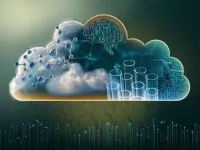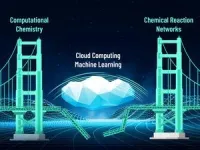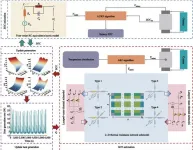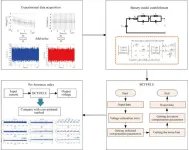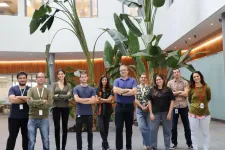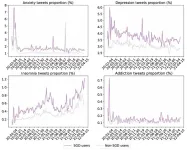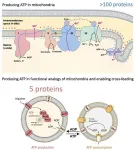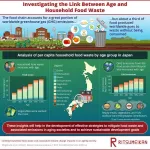(Press-News.org) RICHLAND, Wash.—Some computing challenges are so big that it’s necessary to go all in. That’s the approach a diverse team of scientists and computing experts led by the Department of Energy’s Pacific Northwest National Laboratory, along with colleagues from Microsoft and other national laboratories and universities, are taking to democratize access to emerging cloud computing resources.
The effort, outlined in a recent peer-reviewed journal publication, provides a road map to moving scientific computing resources into a sustainable ecosystem that evolves as the technology advances. The research team demonstrated that cloud computing provides an agile, nimble complement to the powerful leadership computing facilities that have been the scientific computing workhorses for decades.
“This is an entirely new paradigm for scientific computing,” said PNNL computational chemist Karol Kowalski, who led the cross-disciplinary effort. “We have shown that it’s possible to bundle software as a service with cloud computing resources. This initial proof-of-concept shows that cloud computing can provide a menu of options to complement and supplement high-performance computing for solving complex scientific problems.”
Sustainable software in the cloud
The cloud has moved well beyond a place to park an archive of photos and documents. The computing industry has moved to providing compute as a service to financial and pharmaceutical companies, among other industries. In this initiative, the research team focused on porting to the cloud computationally intensive algorithms used to determine the feasibility of proposed new chemicals for industry, advanced polymers, surface coatings and a host of other applications.
The initiative, called Transferring Exascale Computational Chemistry to Cloud Computing Environment and Emerging Hardware Technologies (TEC4), builds on momentum from within the computational chemistry community to port computing resources to users, recognizing the need for continued adaptation of software to meet both scientific needs and hardware evolution.
In their latest perspective article, the team provides information and technical data on the performance of both legacy computing algorithms, such as the popular NWChem software developed originally at PNNL, and the latest software designed to exploit the most advanced graphics processing unit (GPU) architectures. Their results showed that the speed and agility of cloud computing opens doors to completing advanced computational chemistry workflows in days instead of months.
“Microsoft’s goal is to empower the scientific community to accelerate scientific discovery,” said Nathan Baker, product leader for Microsoft’s Azure Quantum Elements. “This collaboration with PNNL is a great example of how modern AI [artificial intelligence] and HPC tools can advance computational chemistry.”
Filling an urgent need for energy solutions
Over the past decade, computational chemistry has shown its ability to not only solve complex science challenges but also to guide and interpret experiments, and ultimately to enable predictions. The most complex of these challenges are best served by the resources available at DOE’s leadership computing facilities, particularly exascale computing capabilities.
As the tools and techniques have advanced, so has the time and cost of arriving at a solution. The leadership team at TEC4 recognized that cloud computing and industry collaboration afforded an opportunity to access computing resources for a wider variety of problem solving.
For example, the team used Microsoft Azure and sophisticated workflows to investigate molecular dynamics of complex chemistry problems. These simulations are useful for studying complex reactions that are difficult to observe experimentally. This powerful tool, used to investigate molecular interactions at the atomic level, requires significant computational resources because of its complexity. Here, the research team demonstrated a pathway toward breaking down the persistent environmental pollutant perfluorooctanoic acid. It’s an example of how computational chemistry can be used to design real-world strategies in environmental remediation.
“We envision an ecosystem of use cases from low-tier to high-tier jobs that take advantage of GPU-based computing now being used extensively for artificial intelligence and machine learning applications,” said Kowalski. “We want to allow users to take advantage of different layers of compute, paying only for what’s needed and bundling software with compute access. This is the first step toward that future state.”
A cloud computing ecosystem
The team is actively recruiting new collaborators both on the developer side and the user side to build a user base to test the new cloud ecosystem.
“We are building a family of codes,” Kowalski added. “The goal is to build a community around this effort.”
Along those lines, the team outlines its plan to train a cadre of students who are proficient in using these tools and will help fill the need for scientists capable of moving computational techniques into the future. The collaboration has led to a new course offered at the University of Texas at El Paso, with Central Michigan University and PNNL as collaborators starting in autumn 2024.
A full list of contributors and funding support is available here.
The research was primarily supported by TEC4, which is funded by the DOE Office of Science, Basic Energy Sciences program, Division of Chemical Sciences, Geosciences, and Biosciences. Additional support was provided by the Department of Defense Strategic Environmental Research and Development Program and internal PNNL investments. The development of NWChem, NWChemEx, and Arrows also used resources of the Environmental Molecular Sciences Laboratory, a DOE user facility located at PNNL, and the National Energy Research Scientific Computing Center, a DOE user facility located at Lawrence Berkeley National Laboratory.
Several PNNL contributors are members of the PNNL Computational and Theoretical Chemistry Institute (CTCI), which is accelerating chemistry software and methods development to solve critical challenges in mission areas such as scientific discovery for sustainable energy. By expediting the integration of chemistry software development with computer science efforts, quantum computing, novel datasets and data science tools like artificial intelligence and machine learning, the CTCI is advancing the development of next-generation molecular modeling capabilities.
# # #
ABOUT PNNL
Pacific Northwest National Laboratory draws on its distinguishing strengths in chemistry, Earth sciences, biology and data science to advance scientific knowledge and address challenges in sustainable energy and national security. Founded in 1965, PNNL is operated by Battelle for the Department of Energy’s Office of Science, which is the single largest supporter of basic research in the physical sciences in the United States. DOE’s Office of Science is working to address some of the most pressing challenges of our time. For more information, visit https://www.energy.gov/science/. For more information on PNNL, visit PNNL's News Center. Follow us on Twitter, Facebook, LinkedIn and Instagram.
END
Cloud computing captures chemistry code
An innovative all-of-computing approach offers the potential for sustainable cloud computing applications to address urgent energy needs
2024-10-21
ELSE PRESS RELEASES FROM THIS DATE:
Novel electrothermal model enables co-estimation of SOC and SOT
2024-10-21
For the main energy storage system for EVs, Li-ion batteries are extensively applied owing to their excellent overall performance The safe and efficient operation of the electric vehicle significantly depends on the accurate state-of-charge (SOC) and state-of-temperature (SOT) of Lithium-ion (Li-ion) batteries. A recent breakthrough study presented by researchers from the Tongji University and Chongqing University introduces a co-estimation of state-of-charge and state-of-temperature for large-format lithium-ion batteries based on ...
Advanced online method for battery model parameter identification: Bias-compensated forgetting factor recursive least squares
2024-10-21
Lithium-ion power battery technology stands out as a pivotal component in advancement of new energy electric vehicles (EVs). Battery parameter identification, as one of the core technologies to achieve an efficient battery management system (BMS), is the key to predicting and managing the performance of Li-ion batteries. A recent breakthrough study presented by researchers from Hebei University of Technology proposes an online battery model parameters identification approach based on bias-compensated forgetting factor recursive least squares. This advanced method is expected to improve the accuracy of parameter identification under different noise.
The ...
Understanding the maturation of white blood cells to find new therapies against lymphoblastic leukaemia
2024-10-21
Over four hundred people, 80% of them being children under 14 years old, will be diagnosed with B-cell Acute Lymphoblastic Leukaemia (B-ALL) next year in Spain, according to the latest projections from the Spanish network of cancer registries (REDECAN). Survival rates for this rapid-growing and aggressive type of blood cancer are high in youth, but fall rapidly with age, especially after 40, stressing the need for new therapeutic alternatives.
B-ALL arises when B-lymphocytes - the antibody producing cells of the immune system - fail to properly mature in the bone marrow, leading to the accumulation of immature progenitors ...
Sexual and gender-diverse individuals face more health challenges during COVID-19: Insights from a large-scale social media analysis
2024-10-21
A new study by researchers at Zhejiang University has highlighted the disproportionate health challenges faced by sexual and gender-diverse (SGD) individuals during the COVID-19 pandemic. By analyzing over 471 million tweets using advanced natural language processing (NLP) techniques, the study reveals that SGD individuals were more likely to discuss concerns related to social connections, mask-wearing, and experienced higher rates of COVID-19 symptoms and mental health issues than non-SGD individuals. The study has been published in the journal Health Data ...
First ever Hispanic thrifty food plan published
2024-10-21
A new study1 has unveiled the Hispanic Thrifty Food Plan (H-TFP), a culturally adapted and affordable diet specifically designed to align with the eating habits of U.S. Hispanic households. The research, led by Adam Drewnowski, PhD, from the University of Washington, used advanced dietary modeling to create a version of the USDA’s Thrifty Food Plan (TFP) that respects the distinctive food patterns of Hispanic communities.
The USDA's Thrifty Food Plan is the foundation for setting benefits under the Supplemental Nutrition Assistance Program (SNAP), but it has not traditionally accounted for the ...
Study reveals how fear memories transform over time, offering new insights into PTSD
2024-10-21
An innovative study, to be published in Nature Communications on October 21, 2024, reveals the mechanism behind two seemingly contradictory effects of fear memories: the inability to forget yet the difficulty to recall. Led by researchers from Sony Computer Science Laboratories, Inc., ATR Computational Neuroscience Laboratories, and the University of Tokyo, the study shows how fear experiences are initially remembered as broad, associative memories, but over time become integrated into episodic memories with a more specific timeline.
The researchers conducted experiments using functional ...
New guideline: Preventing a first stroke may be possible with screening, lifestyle changes
2024-10-21
Guideline Highlights:
Each year in the U.S., over half a million people have a first stroke; however, up to 80% of strokes may be preventable.
The new primary prevention of stroke guideline from the American Stroke Association urges health care professionals to screen people for stroke risk factors, including high blood pressure, elevated cholesterol, high blood sugar and obesity.
Increasing public awareness and knowledge about healthy lifestyle changes, such as smoking cessation, increased physical activity, improved dietary habits and better sleep, may also help people reduce their stroke risk.
The new guideline highlights the American Heart ...
Creating a simplified form of life
2024-10-21
It is one of the most fundamental questions in science: how can lifeless molecules come together to form a living cell? Bert Poolman, Professor of Biochemistry at the University of Groningen, has been working on this problem for over twenty years. He aims to understand life by trying to reconstruct it; he is building simplified artificial versions of biological systems that can be used as components for a synthetic cell. Poolman recently published two papers in Nature Nanotechnology and Nature Communications. In the first paper, he describes a system for energy conversion ...
Large-scale study of brain volume finds genetic links to Parkinson’s disease and ADHD
2024-10-21
In one of the largest-ever studies of DNA and brain volume, researchers have identified 254 genetic variants that shape key structures in the “deep brain,” including those that control memory, motor skills, addictive behaviors and more. The findings were just published in the journal Nature Genetics.
The study is powered by the Enhancing Neuro Imaging Genetics through Meta-Analysis (ENIGMA) consortium, an international effort based at the Keck School of Medicine of USC, which unites more than 1,000 research labs across 45 countries to hunt for genetic variations that affect the brain’s structure and function.
“A lot of brain diseases are known to be partially ...
Understanding the relationship between food waste, climate change, and aging population
2024-10-21
Food production is one of the pillars of human civilization and underlies many of the changes caused by humans on planet’s landscapes. Producing food and getting it to people’s plates entails a significant expenditure of energy and resources. Unfortunately, approximately one third of all food produced globally is not consumed and discarded. Hence, to build sustainable societies, it is essential to minimize food waste.
In Japan, based on estimates reported by governmental institutions, an astonishing 2.47 megatons of food waste was generated in ...
LAST 30 PRESS RELEASES:
Scientists trace microplastics in fertilizer from fields to the beach
The Lancet Obstetrics, Gynecology, & Women’s Health: Taking paracetamol during pregnancy does not increase risk of autism, ADHD or intellectual disabilities, confirms new gold-standard evidence review
Taking paracetamol during pregnancy does not increase risk of autism, ADHD or intellectual disabilities
Harm reduction vending machines in New York State expand access to overdose treatment and drug test strips, UB studies confirm
University of Phoenix releases white paper on Credit for Prior Learning as a catalyst for internal mobility and retention
Canada losing track of salmon health as climate and industrial threats mount
Molecular sieve-confined Pt-FeOx catalysts achieve highly efficient reversible hydrogen cycle of methylcyclohexane-toluene
Investment in farm productivity tools key to reducing greenhouse gas
New review highlights electrochemical pathways to recover uranium from wastewater and seawater
Hidden pollutants in shale gas development raise environmental concerns, new review finds
Discarded cigarette butts transformed into high performance energy storage materials
Researchers highlight role of alternative RNA splicing in schizophrenia
NTU Singapore scientists find new way to disarm antibiotic-resistant bacteria and restore healing in chronic wounds
Research suggests nationwide racial bias in media reporting on gun violence
Revealing the cell’s nanocourier at work
Health impacts of nursing home staffing
Public views about opioid overdose and people with opioid use disorder
Age-related changes in sperm DNA may play a role in autism risk
Ambitious model fails to explain near-death experiences, experts say
Multifaceted effects of inward foreign direct investment on new venture creation
Exploring mutations that spontaneously switch on a key brain cell receptor
Two-step genome editing enables the creation of full-length humanized mouse models
Pusan National University researchers develop light-activated tissue adhesive patch for rapid, watertight neurosurgical sealing
Study finds so-called super agers tend to have at least two key genetic advantages
Brain stimulation device cleared for ADHD in the US is overall safe but ineffective
Scientists discover natural ‘brake’ that could stop harmful inflammation
Tougher solid electrolyte advances long-sought lithium metal batteries
Experts provide policy roadmap to reduce dementia risk
New 3D imaging system could address limitations of MRI, CT and ultrasound
First-in-human drug trial lowers high blood fats
[Press-News.org] Cloud computing captures chemistry codeAn innovative all-of-computing approach offers the potential for sustainable cloud computing applications to address urgent energy needs
